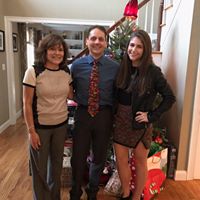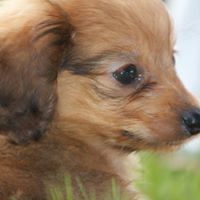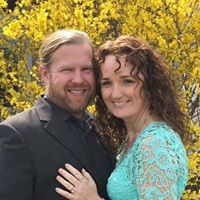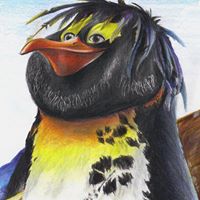Douglas Warren Howie
age ~86
from Terrell, TX
- Also known as:
-
- Douglas W Howie
- Douglas E Howie
- Douglas H Warren
- Douglas Howe
- Howie Douglas
- Phone and address:
-
500 9Th St, Terrell, TX 75160
9725246843
Douglas Howie Phones & Addresses
- 500 9Th St, Terrell, TX 75160 • 9725246843 • 9725633332 • 9725639698
- 3111 E Powell Ave, Evansville, IN 47714
- 1435 Washington Ave, Parkersburg, WV 26101
- 6 University Dr, Amherst, MA 01002
- East Longmeadow, MA
- Luray, TN
- 500 9Th St, Terrell, TX 75160 • 2145639698
Work
-
Position:Production Occupations
Education
-
Degree:Graduate or professional degree
Emails
Specialities
Company & Commercial • Insolvency • Financial Services
Us Patents
-
Hydrogel Coatings And Their Employment In A Quartz Crystal Microbalance Ion Sensor
view source -
US Patent:20040089533, May 13, 2004
-
Filed:Aug 6, 2003
-
Appl. No.:10/635289
-
Inventors:David Hoagland - Granby MA, US
Douglas Howie - Parkersburg WV, US -
International Classification:B05D001/40
B05D003/02 -
US Classification:204/192110, 427/331000
-
Abstract:A method to attach hydrophilic and/or ionogenic coatings to metallic surfaces robustly. Important applications for the invention extend to sensor types, various biomedical devices, and additional technologies requiring metal coatings with specified properties, such as sensors that employ the Quartz Crystal Microbalance (QCM) principle. This is a method to produce an adherent hydrogel against a metal surface by gelling a liquid mixture of components. The implementation of the invention for QCM ion sensors employs poly(allylamine) (PAH) hydrogels. The reaction of PAH with N-Acetylhomocysteine thiolactone (AHTL) (Fluda) in water under basic conditions produces thiol groups. This reaction removes ion exchange functionality and permits robust attachment of the hydrogel to the QCM's gold electrode. The PAH concentration in the aqueous starting mixture is between 12 and 25 weight percent, the AHTL concentration is between 5 and 25 mole percent of PAH repeat units, and the DadMac concentration is between 10 and 15 mole percent of PAH repeat units. Also, between 1 and 2 equivalents of base (sodium, hydroxide, NaOH) are present per equivalent of PAH repeat units.
-
Hydrogel Coatings And Their Employment In A Quartz Crytal Microbalance Ion Sensor
view source -
US Patent:20050196532, Sep 8, 2005
-
Filed:Jan 18, 2005
-
Appl. No.:11/037674
-
Inventors:Alex Waldrop - South Portland ME, US
David Hoagland - Granby MA, US
Douglas Howie - Parkersburg WV, US -
International Classification:B05D003/12
-
US Classification:427240000
-
Abstract:A method to attach hydrophilic and/or ionogenic coatings to metallic surfaces robustly. Important applications for the invention extend to sensor types, various biomedical devices, and additional technologies requiring metal coatings with specified properties, such as sensors that employ the Quartz Crystal Microbalance (QCM) principle. This is a method to produce an adherent hydrogel against a metal surface by gelling a liquid mixture of components. The implementation of the invention for QCM ion sensors employs poly(allylamine) (PAH) hydrogels. The reaction of PAH with N-Acetylhomocysteine thiolactone (AHTL) (Fluka) in water under basic conditions produces thiol groups. This reaction removes ion exchange functionality and permits robust attachment of the hydrogel to the QCM's gold electrode. The PAH concentration in the aqueous starting mixture is between 12 and 25 weight percent, the AHTL concentration is between 5 and 25 mole percent of PAH repeat units, and the DadMac concentration is between 10 and 15 mole percent of PAH repeat units. Also, between 0.1 and 0.8 equivalents of base (sodium hydroxide, NaOH) are present per equivalent of PAH repeat units.
-
Special Visual Effect Thermoplastic Compositions, Articles Made Therefrom, And Method
view source -
US Patent:20050245645, Nov 3, 2005
-
Filed:May 3, 2004
-
Appl. No.:10/837865
-
Inventors:Douglas Howie - Parkersburg WV, US
-
International Classification:C08K003/00
C08L051/00 -
US Classification:524001000, 525063000
-
Abstract:The present invention relates to a composition comprising rubber modified thermoplastic resins which show special visual effects such as a metallic sparkle effect and/or retroreflective effect from the surface of thermoplastic articles comprising the composition. In a particular embodiment the present invention relates to a composition comprising: (i) a rubber modified thermoplastic resin comprising a discontinuous elastomeric phase dispersed in a rigid thermoplastic phase, wherein at least a portion of the rigid thermoplastic phase is grafted to the elastomeric phase, and (ii) a plurality of microsphere beads having a diameter in a range of about 1 to about 1300 microns and having an index of refraction ranging from about 1.4 to about 2.5. In other embodiments the present invention relates to articles made from the composition and to methods for providing a special visual effect and also for enhancing the image texture from the surface of the article.
-
Multilayer Composites With Special Visual Effects
view source -
US Patent:20050282000, Dec 22, 2005
-
Filed:Jun 16, 2004
-
Appl. No.:10/869134
-
Inventors:Douglas Howie - Parkersburg WV, US
-
International Classification:B32B005/16
B32B027/08 -
US Classification:428323000, 428522000
-
Abstract:The present invention relates to multilayer composites which show special visual effects while maintaining other beneficial properties such as melt strength and impact strength. In one embodiment the present invention relates to a multilayer composite comprising, in sequence, (i) optionally, an outer layer comprising an acrylic resin which is substantially transparent to visible light, (ii) a second layer comprising a first rubber modified thermoplastic resin which is substantially transparent to visible light, and at least one additive to provide a special visual effect; (iii) a third layer comprising a light-blocking layer; (iv) a fourth layer comprising a second rubber modified thermoplastic resin different from said first rubber modified thermoplastic resin; (v) optionally, a fifth layer comprising a tielayer; and (vi) optionally, a substrate layer. In other embodiments the present invention relates to articles made from the composite.
-
Method For Making Multilayer Articles Having Special Visual Effects
view source -
US Patent:20060237122, Oct 26, 2006
-
Filed:Apr 21, 2005
-
Appl. No.:11/111560
-
Inventors:Sandeep Dhawan - Vienna WV, US
Douglas Howie - Parkersburg WV, US -
International Classification:B29C 47/00
-
US Classification:156244110, 156327000
-
Abstract:The present invention relates to a method for making a multilayer article, wherein said multilayer article comprises: (i) a first layer comprising an acrylic resin; (ii) at least one translucent second layer comprising (a) an acrylic resin, optionally further comprising an impact modifier; (b) a rubber modified thermoplastic resin composition; (c) optionally a rheology modifier; and (d) a visual effects additive; (iii) a third layer comprising an acrylonitrile-butadiene-styrene (ABS) resin; and (iv) an optional backing layer comprising either a thermosetting polymer substrate, optionally fiber-reinforced, or glass filled ABS resin; and wherein said method comprises the steps of: (I) drying the components of the second layer, either individually or in combination, to a volatiles content of less than 0.06 weight % prior to processing a mixture comprising said components to form said second layer; and (II) coextruding the second and third layers, and optionally the first layer to form the multilayer article. In other embodiments the present invention relates to articles made by the method.
-
Multilayer Composites With Special Visual Effects
view source -
US Patent:20070231565, Oct 4, 2007
-
Filed:Jun 12, 2007
-
Appl. No.:11/761753
-
Inventors:Douglas Howie - Parkersburg WV, US
-
International Classification:B32B 5/16
B32B 27/08 -
US Classification:428323000, 428522000
-
Abstract:The present invention relates to multilayer composites which show special visual effects while maintaining other beneficial properties such as melt strength and impact strength. In one embodiment the present invention relates to a multilayer composite comprising, in sequence, (i) optionally, an outer layer comprising an acrylic resin which is substantially transparent to visible light, (ii) a second layer comprising a first rubber modified thermoplastic resin which is substantially transparent to visible light, and at least one additive to provide a special visual effect; (iii) a third layer comprising a light-blocking layer; (iv) a fourth layer comprising a second rubber modified thermoplastic resin different from said first rubber modified thermoplastic resin; (v) optionally, a fifth layer comprising a tielayer; and (vi) optionally, a substrate layer. In other embodiments the present invention relates to articles made from the composite.
-
Resinous Composition Comprising Special Visual Effect Additive And Method
view source -
US Patent:20070249742, Oct 25, 2007
-
Filed:Apr 19, 2006
-
Appl. No.:11/379283
-
Inventors:Douglas Howie - Parkersburg WV, US
Satish Gaggar - Parkersburg WV, US -
International Classification:C08J 9/00
-
US Classification:521085000
-
Abstract:Disclosed is a method for substantially diminishing or essentially eliminating a visible knitline in an article derived from a resinous composition comprising at least one thermoplastic resin and at least one special visual effect additive, which comprises the steps of (i) including in the composition an effective amount of at least one chemical foaming agent, and (ii) forming the article in a process that produces a knitline, wherein the article exhibits a substantially diminished or essentially no visible knitline compared to a similar article prepared without chemical foaming agent. Also disclosed are resinous compositions related thereto. Articles made from the compositions are also disclosed.
-
Formed Resinous Article Comprising Special Visual Effect Additive
view source -
US Patent:20070287790, Dec 13, 2007
-
Filed:Jun 8, 2006
-
Appl. No.:11/423039
-
Inventors:Douglas Warren Howie - Parkersburg WV, US
Patrick Rodgers - Vienna WV, US -
International Classification:C09B 67/00
-
US Classification:524502, 524522, 524523, 524533, 524495, 524497, 524847, 428357, 428363, 428557, 106 3133, 106 3165, 106636, 106784, 106814
-
Abstract:The present invention relates to formed resinous articles derived from compositions comprising an ASA resin and a special visual effect additive.
Name / Title
Company / Classification
Phones & Addresses
Director , Secretary
TERRELL ECONOMIC DEVELOPMENT CORPORATION
Business Association
Business Association
PO Box 97, Terrell, TX 75160
1314 W Moore Ave, Terrell, TX 75160
9725245704
1314 W Moore Ave, Terrell, TX 75160
9725245704
Secretary
TERRELL INDUSTRIAL FOUNDATION, INC
PO Box 97, Terrell, TX 75160
Resumes

Realtorâ And Broker Associate
view sourceLocation:
Evansville, IN
Industry:
Real Estate
Work:
Fc Tucker Emge Realtors
Realtorâ and Broker Associate
Independent Consultant
Advanced Specialist
Sabic Innovative Plastics Holding B.v. 2002 - 2017
Staff Scientist, Product Developer and Core Business Technology Support
Realtorâ and Broker Associate
Independent Consultant
Advanced Specialist
Sabic Innovative Plastics Holding B.v. 2002 - 2017
Staff Scientist, Product Developer and Core Business Technology Support
Education:
University of Massachusetts Amherst 1997 - 2003
Doctorates, Doctor of Philosophy, Philosophy
Doctorates, Doctor of Philosophy, Philosophy
Skills:
Customer Needs Assessment
Six Sigma Product Design and Improvement Methodology
Historical Data Analysis
Attribute Regression and Agreement Analysis
Leadership
Public Speaking
Microsoft Office
Microsoft Excel
Product Design
Six Sigma Product Design and Improvement Methodology
Historical Data Analysis
Attribute Regression and Agreement Analysis
Leadership
Public Speaking
Microsoft Office
Microsoft Excel
Product Design

Vice President For Fiscal Affairs
view sourceLocation:
Dallas, TX
Industry:
Education Management
Work:
Southwestern Christian College
Vice President For Fiscal Affairs
Vice President For Fiscal Affairs
Lawyers & Attorneys

Douglas Howie - Lawyer
view sourceOffice:
Barlow Lyde & Gilbert LLP
Specialties:
Company & Commercial
Insolvency
Financial Services
Insolvency
Financial Services
ISLN:
906341511
Admitted:
1980
Googleplus

Douglas Howie

Douglas Howie
Youtube
Plaxo

Howie Douglas
view sourceCheshire, UKPast: Computer Technician at MBS Computers
Flickr
Classmates

Douglas Howie
view sourceSchools:
Greenwich Village Public School 41 New York NY 1967-1972, New York Intermediate School 70 New York NY 1973-1976
Community:
Abbi Gold, Eugene Robinson, Marc Fisher, Tommy Collins

Douglas Howie
view source
Howie Douglas
view source
Douglas Howie
view source
Trevor Douglas Howie
view source
Douglas Howie
view source
Daniel Douglas Howie
view source
Douglas Howie
view source
Douglas Howie
view sourceGet Report for Douglas Warren Howie from Terrell, TX, age ~86













